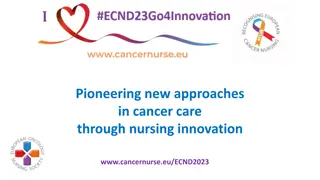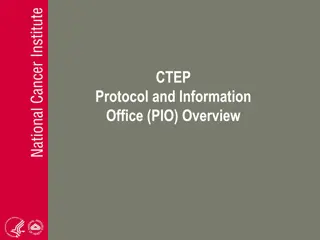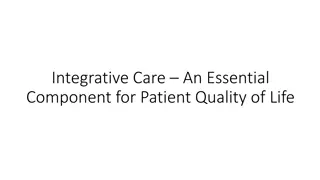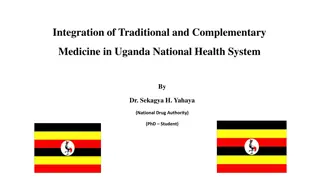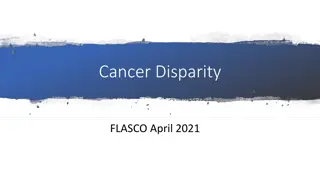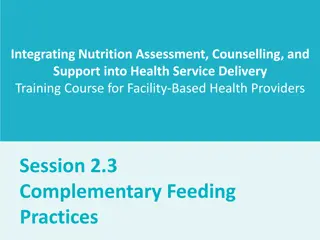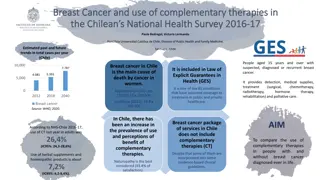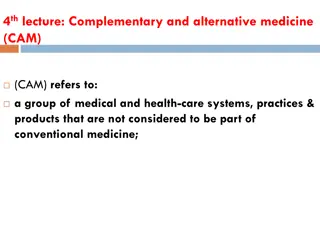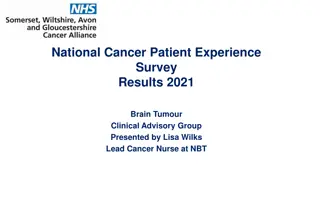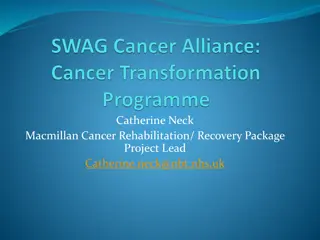Integration of Complementary Medicine in Cancer Care in Tuscany
Describes the successful integration of Complementary Medicine in the network of Cancer Departments within the Tuscan Public Healthcare System. The initiative, spearheaded by experts in both Complementary Medicine and medical oncology, has led to the development of Regional Guidelines incorporating complementary and integrative medicine in cancer care pathways. Specific treatments like acupuncture, homeopathy, and herbal medicine are being utilized to address cancer-related symptoms and treatment side effects. The Tuscan Integrated Medicine Network for cancer patients is actively progressing, with a focus on supportive cancer care. Through collaborative efforts and evidence-based practices, the integration of Complementary Medicine is enhancing cancer care in the region.
Download Presentation

Please find below an Image/Link to download the presentation.
The content on the website is provided AS IS for your information and personal use only. It may not be sold, licensed, or shared on other websites without obtaining consent from the author. Download presentation by click this link. If you encounter any issues during the download, it is possible that the publisher has removed the file from their server.
E N D
Presentation Transcript
Integrative Oncology in the Region of Tuscany: a Successful Integration in Public Health Elio Rossi*, Sonia Baccetti*, Mariella Di Stefano*, Gianni Amunni** * Clinic for Complementary Medicine and Diet in Oncology, North-Western Tuscan Local Health Authority, Lucca, Italy **Institute Cancer Prevention Research and Oncological Network, Florence, Italy TRANS NCI-NIH CONFERENCE ON INTERNATIONAL PERSPECTIVES ON INTEGRATIVE MEDICINE FOR CANCER PREVENTION AND CANCER PATIENT MANAGEMENT OCTOBER 2020, BETHESDA, MARYLAND, USA
Aims, Methods and Results (I) Aims and Methods: To describe the process of integration of Complementary Medicine (CM) in the network of Cancer Departments of Tuscan Public Healthcare System by means of a retrospective collection of documents. Results: In 2009 the Tuscan Tumor Institute and the Tuscan Network of Integrative Medicine (TNIM) established a working group of experts in CM and medical oncologists to review the literature on the use of CM in cancer care. In 2013-2015 the TNIM participated in the European Partnership for Action Against Cancer-EPAAC (7th Framework Programme), with the purpose of collecting evidence on the use of CM in cancer and mapping the European centers offering Integrative Oncology services. In 2015, a Resolution of the Tuscan Regional Government established to develop the use of some CM to treat cancer-related symptoms and side effects of conventional anticancer therapies (see Figure 1). They were acupuncture for nausea and post- chemotherapy and post-surgery vomiting, cancer pain, hot flashes of iatrogenic menopause, xerostomia; homeopathy for hot flushes of iatrogenic menopause and the side effects of radiotherapy; herbal medicine for pain, nausea and vomiting and anxiety, depression. A Panel of CM experts and medical oncologists defined how to apply this Resolution. In 2019, Regional Guidelines (Diagnostic and Therapeutic Care Pathway) on breast cancer have been approved, including a section on complementary and integrative medicine as supportive cancer care. The Tuscan Integrated Medicine Network for people with cancer (Re.To.M.i. Tumors) is currently underway. Figure 1: in 2015 the Resolution n. 418 of the Tuscan Regional Government ratified to develop the use of some CM in the treatment of cancer-related symptoms and side effects of conventional anticancer therapy.
Results (II) Frequency Percentage 325 35 28 19 14 13 11 10 10 10 10 7 5 5 5 4 3 3 2 2 2 2 2 22 549 59.2 6.4 5.1 3.5 2.6 2.4 2.0 1.8 1.8 1.8 1.8 1.3 .9 .9 9 .7 .5 .5 .4 .4 .4 .4 .4 3.8 100.0 Breast Colon Lung Ovaries Uterus Rectum Brain Stomach Prostate Pancreas Melanoma Others Lymphoma non Hodgkin Kidney Bladder Esophagus Liver Cholangiocarcinoma Head/neck LMC Thyroid Multiple myeloma Tongue Others Total G0 G1 G2 G3 p-value Frequenc y 0 24 0 7 0 5 0 16 0 9 0 11 1 12 0 10 Significance at Wilcoxon test for paired samples Frequenc y 15 23 7 6 2 2 7 16 2 8 1 6 2 5 1 3 Frequenc y 45 12 22 4 4 0 41 6 20 3 19 2 21 2 13 0 Frequenc y 27 2 15 0 9 1 38 3 15 0 24 0 8 0 9 0 Symptoms 87 61 44 17 15 8 86 41 37 20 44 19 32 19 23 13 Hot flashes (first visit) .000 Hot flashes (last visit) Nausea/vomit (first visit) .001 Nausea/vomit (last visit) Constipation (first visit) .025 Constipation (last visit) Asthenia (first visit) .000 Asthenia (last visit) Anxiety (first visit) .000 Anxiety (last visit) Depression (first visit) .000 Depression (last visit) Insomnia (first visit) .000 Insomnia (last visit) Mucositis (first visit) .002 Mucositis (last visit) Tables 1 and 2 and Figure 1: A highlight on the activities of the Clinic for CM and Diet in Oncology, Campo di Marte Hospital, Lucca, Italy, from 2013 to 2019. Noteworthy, the vast majority of patients visited at the Clinic was represented by women diagnosed with Breast Cancer (59.2%). This is in line with recent literature, since Breast Cancer is the most common cancer diagnosis among women in Italy. Table 2 also lists the main therapeutic outcomes for patients after CM treatment (Wilcoxon Test).
Results (III) and Conclusions Results (continued): The Network aims at coordinating complementary integrative medicine interventions in oncology, to ensure cancer patients effective, safe, high quality and uniform treatments and improve their quality of life, reducing the side effects of anticancer therapy in a multidisciplinary approach to therapy. Integrative medicine visit Conclusions: complementary Comprehensive Cancer Care Network contributes to respond safely and effectively to the demand coming from cancer patients combining safety and equity of access in Public Healthcare Systems. The integration treatments of evidence-based part as a of a References: - Giunta 09/11/2009: Medicine Complementari (MC): approvazione criteri di accreditamento e formazione extra-universitaria, nelle single discipline di MC, di cui all art. 2 L.R. 09/2007 . Regionale Toscana: Commissione Delibera Formazione n. 993 per del le verifica degli Istituti di Thank You for Your Attention e-mail to: eliogiovanni.rossi@uslnordovest.toscana.it













